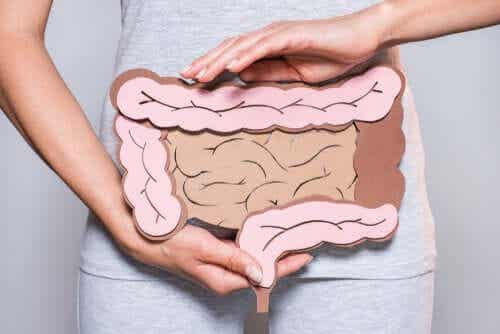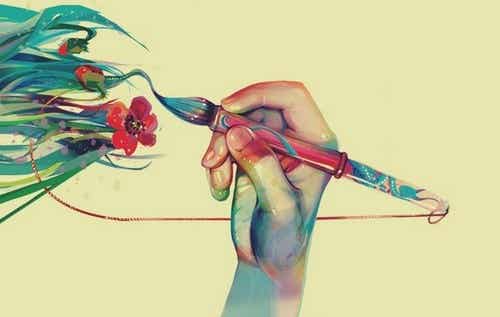The emotion curve describes the process in which the person begins to feel an emotion until it completely disappears. Taking into consideration its evolution, we propose in this article the three actions that must never be performed at the moment of greatest emotional intensity.

Last update: Augusts 02, 2019
Have you ever heard of the emotion curve? We tell you about it in this article! Many define emotion as a subjective state that possesses an immense and intense affective charge. And although it is quite complicated to explain what emotions are, we are nevertheless able to describe these subjective states in a clear form.
For example, they can be described through the memory of a situation in which one felt anger or joy. Much of these emotions, from sadness to fear, develop in a very similar way. In sessions, we tend to talk about the emotion curve.
What is an emotion for?
According to recent studies, the suppression or non-expression of emotional events significant for the individual (for example, mourning the loss of a loved one, expressing affection ...) can cause marked physiological hyperactivation, immunosuppression and other particularly contraindicated effects for physical and mental health in the medium and long term.
That said, why are emotions so relevant and even more so is their expression? The same authors report the existence of intrapersonal functions - more related to homeostasis and survival - and of extrapersonal functions, which refer to a more social role.
Intrapersonal factors of emotion
- Coordinate the different response systems cognitive, physiological and behavioral in the same direction.
- Activating behaviors that can be inhibited in the absence of emotion: for example, a non-sporting person can decide to run if he feels fear or a person who defines himself as non-violent can defend someone if he feels anger or anger.
- They predispose the organism to reactions of fight or flight: emotions play a very important role in survival. Feeling fear is nothing more than the prelude to an escape or an attack in the face of a stimulus interpreted as a threat. Without the signal of fear, the body could not prepare for attack or flight.
For example, when you give an alarm response to a stimulus of danger, that is, when you feel fear, the Hypothalamic-Pituitary-Adrenal axis is activated, which in turn activates the adrenal glands to emit glucocorticoids. Adrenaline and endogenous opiates are released to reduce pain in the event of an attack on the body. At the same time, the activity of systems useless for escape at the given moment, such as digestion, is reduced.
Thanks to fear, therefore, the individual in danger increases his heart rate, contracts the spleen to produce red blood cells in case of injuries, dilates the pupils, etc.
- They facilitate rapid information processing: the evaluation of the characteristics of the adjacent stimuli becomes rapid, which allows you to quickly decide the best actions to be implemented to adapt to the needs of the environment that arouses the emotion.
Extra-personal factors of emotions
Regarding the extra-personal functions of emotions, they allow us to communicate our intentions to others, share with them what we feel and control facial expression, gestures and voice, including to influence their behavior.
As Aristotle wrote, man is a political animal and emotions also play a socializing role. For example, in connection with the above, it is possible to obtain specific responses in individuals through certain emotions. So we have people who use sadness to get support, others who use affection or joy to get something, and so on, to continue with the more instrumental part of emotions.
The curve of emotions
It is difficult to maintain the maximum intensity of an emotion for a long period of time. An emotion typically works as a crescendo of feelings that get stronger and stronger. A maximum point can be reached, after which the emotion will no longer have the same intensity. Thereafter, the entity decreases until it returns to the baseline.
This mechanism occurs both with emotions and with other psychic constructs such as anxiety attacks and panic attacks. For this reason, neither of these last two tends to last longer than ten minutes.
Even knowing the emotional intensity that accompanies fear, anger or sadness and perhaps because of this vehemence, generally there is a tendency to perform actions with important consequences right at the highest point of the curve of emotions. And this can be counterproductive.
The management of emotions in therapy with the emotion curve
At the beginning of therapy, when the individual does not yet have the tools to manage his reactions, it is useful to introduce the curve of emotions. The goal is not to control the emotions themselves, but rather to avoid the negative consequences that an intense and badly managed emotion can cause.
It is therefore indicated in patients suffering from depression, anxiety, who are in mourning, in couple therapy, etc. It is very useful, in the first sessions, to carry out a detailed psychoeducation on the functioning of emotions. It is necessary emphasize what is not appropriate to do when you are at the emotional peak. Therapy will then allow the person not to experience those emotions in such an intense and exacerbated way.
Three things not to do during the emotional peak
It is essential to explain what are the three actions you should never perform when you are at the emotional peak. Emotions can be anger, sadness, fear, and even happiness. In moments of emotional intensity, actions will hardly be carried out according to a rational point of view.
These actions are:
- To make decisions: Taking for example the case of a woman suffering from severe depression, it is important to make her understand that in moments of greatest discomfort it is dangerous to make any kind of decision. The decisions made will be accompanied by the deep sadness and despair of the moment. In this way, we can also avoid choices such as suicide or self-harm.
- Try to solve the problem: If the intense emotion was caused by a particular event, it is not advisable to try to remedy the situation while overwhelmed by the emotion in question. Not being able to rely, at that moment, on the rational part, but only on the emotional one, one does not have the tools that are usually used to solve problems.
Furthermore, the desperation of the moment can lead the person to make bad decisions in order to resolve the conflict. The best thing to do is to wait for the emotional intensity to subside.
- To think: emotion can bring with it infinite catastrophic, irrational and useless thoughts for the event you are experiencing. Some of these thoughts can bring out other emotions with the same intensity as the previous ones. Thought can also lead to acting irrationally.
Conclusions on the emotion curve
In addition to listing the actions that shouldn't be done during peak emotional events, it's also good to recommend those that can be taken. This means explaining concrete actions that can replace that desire to think, to solve the problem or to make decisions. It may be useful to write a list with the different alternatives to consult in moments of greatest emotional intensity.


























